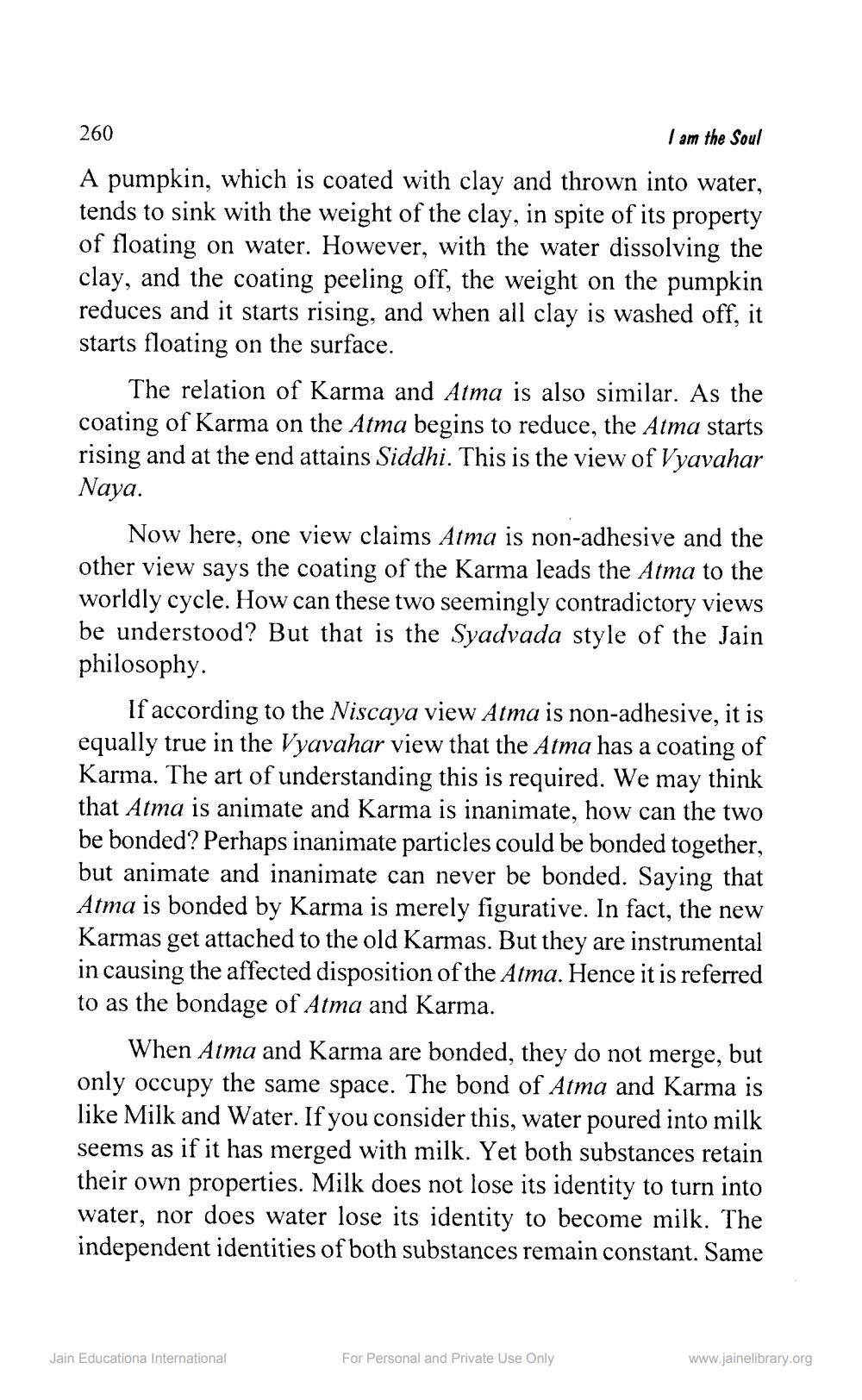________________
260
I am the Soul A pumpkin, which is coated with clay and thrown into water, tends to sink with the weight of the clay, in spite of its property of floating on water. However, with the water dissolving the clay, and the coating peeling off, the weight on the pumpkin reduces and it starts rising, and when all clay is washed off, it starts floating on the surface.
The relation of Karma and Atma is also similar. As the coating of Karma on the Atma begins to reduce, the Atma starts rising and at the end attains Siddhi. This is the view of Vyavahar Naya.
Now here, one view claims Atma is non-adhesive and the other view says the coating of the Karma leads the Atma to the worldly cycle. How can these two seemingly contradictory views be understood? But that is the Syadvada style of the Jain philosophy.
If according to the Niscaya view Atma is non-adhesive, it is equally true in the Vyavahar view that the Atma has a coating of Karma. The art of understanding this is required. We may think that Atma is animate and Karma is inanimate, how can the two be bonded? Perhaps inanimate particles could be bonded together, but animate and inanimate can never be bonded. Saying that Atma is bonded by Karma is merely figurative. In fact, the new Karmas get attached to the old Karmas. But they are instrumental in causing the affected disposition of the Atma. Hence it is referred to as the bondage of Atma and Karma.
When Atma and Karma are bonded, they do not merge, but only occupy the same space. The bond of Atma and Karma is like Milk and Water. If you consider this, water poured into milk seems as if it has merged with milk. Yet both substances retain their own properties. Milk does not lose its identity to turn into water, nor does water lose its identity to become milk. The independent identities of both substances remain constant. Same
Jain Educationa International
For Personal and Private Use Only
www.jainelibrary.org




